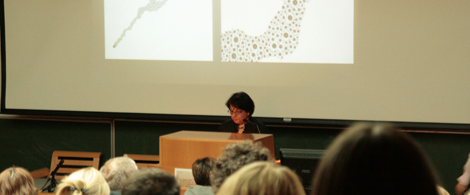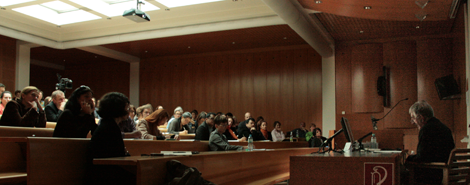| « Abstraction through Stills | NEW LOCATION FOR GLOBAL ART SYMPOSIUM ON JULY 29 AND 30 » |
The Path to Global Art - Symposium Day I
The first part of our global art forum saw Hans Belting, art historian and professor emeritus at the State University of Arts and Design, Karlsruhe, sketch out the way from world art, a term still rooted in colonialism and mostly meaning traditional art which made it unaccessible to contemporary non-western artists, to global art.
Monica Juneja from the University of Heidelberg then picked up the thread, turning into a slightly different direction though by questioning wether there can be a global art history, taking into consideration the disclipine eveolved with western art and is thus a concept embedded into it. In her opinion, it is mostly relationships that need to be thought over, between people and institutions, but also things like the fabled incongruity of the global and the local or the notion that the aesthetic and the politic are incompatible.

The following discussion, starring the aforementioned speakers plus Peter Friedl who is currently teaching the class titled "Images as Concepts" at the Alte Saline Hallein, very much circled around the very nature of global art. The experiment of trying to tie it to contemporary art led to what can almost be called a diss of the latter, with Hans Belting stating that artists today in fact should step out of the contemporary and Peter Friedl even going as far as saying that contemporary art makes him nervous and he tries hard not get lumped into it. Also discussed was the master narrative and how it had to be changed to confirm with the new global thinking. In the end, it was agreed global art was indeed a challenge that called for a lot of rethinking, that needed institutions to be less inert, perimeters to change, not only in the field of art history, but generally in all artistic areas and practises.
On this first day it was already interesting to see how many different positions and focusses are coming together here, be it those of practitioners or theorists, of speakers from formerly colonised areas or ones haling from those that did the colonising. For me, one of the most important questions remains to be asked: Is there actually a thing like global art?
The symposium continues on Saturday. mp



